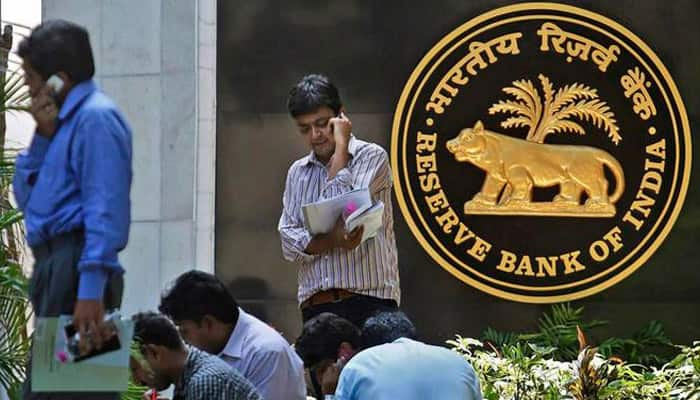Mumbai: Putting the ball in government's court, RBI Governor Raghuram Rajan Tuesday kept the key interest rate unchanged amid inflation and growth concerns, saying that further easing will depend on "structural reforms" in the forthcoming Budget as well as macroeconomic factors.
He said the government has suggested a number of steps to make the economy more flexible, create growth opportunities as well as incentivise investments, and these are the reforms that the Reserve Bank will be look at in the forthcoming Budget to be announced on February 29.
"Structural reforms in the forthcoming Budget that boost growth while controlling spending will create more space for monetary policy to support growth, while also ensuring that inflation remains on the projected path of 5 percent by the end of FY17," Rajan said in the sixth bi-monthly monetary policy review.
Although he left the repo rate unchanged at 6.75 percent, Rajan said RBI continues to be accommodative, while it awaits further data on the development of inflation. It had cut the lending rate last year by 125 bps in 4 installments.
"One of the biggest sources of concerns in the economy today is the services sector inflation because there is limited capacity for example in education, healthcare," Rajan told reporters at the customary post-policy press conference.
There could be steps to encourage more training and skilling, he said.
"So, whether the government takes some steps in that direction...all those are structural reforms that could help in a particular area we are interested in which is lowering the pace of inflation overtime," he added.
The decision to keep repo rate on hold is based on the inflation trajectory which is moving along the set path, he said, adding that if the data supports it, RBI will be accommodative.
"Broadly, I don't think it is fair to read that we have become more hawkish over time. I think broadly speaking the positives are balanced by the negatives. There has been some movement downwards in oil prices...there are some risks which can also pull inflation downside such as a good monsoon next year," he said.
On the inflation trajectory, he said, "with unfavourable base-effects on the ebb and benign prices of fruits and vegetables and crude oil, the January 2016 inflation target of 6 percent should be met.
"Going forward, under the assumption of a normal monsoon and the current level of international crude oil prices and exchange rates, inflation is expected to be inertial and be around 5 percent by the end of FY17".
Following the policy review, the BSE Sensex was trading more than 300 points down shortly before the close of trade.
The RBI Governor cited the implementation of the 7th Pay Commission report as a possible downside risk to inflation, saying that its impact has not been factored in yet.
"The Reserve Bank will adjust the forecast path as and when more clarity emerges on the timing of implementation," he said, adding "there are some aspects of the Pay Commission that we can look through and some we cannot and overtime as the award is actually put in place, we will see and will be able to give you more information on that.
RBI kept the growth the 2015-16 growth estimate unchanged at 7.4 percent but with a downside bias. However, it sounded positive on the 2016-17 GDP growth at 7.6 percent, saying "growth in FY17 is expected to strengthen gradually, notwithstanding significant headwinds".
"Expectations of a normal monsoon after two consecutive years of rainfall deficiency, the large positive terms of trade gain, improving real incomes of households and lower input costs of firms should contribute to strengthening the growth momentum," Rajan said.
Yet, he added, a still weak domestic private investment demand in a phase of balance sheet adjustments, re-emergence of concerns relating to stalled projects, excess capacity in industry, sluggish external demand conditions dampening export growth could act as headwinds.
"Based on an assessment of the balance of risks, GVA growth for 2016-17 is projected at 7.6 percent," Rajan said.
Talking about the bad loan issues which the banks are grappling with, he said the RBI has expanded the tools as the banks have to deal with stressed loans.
"We are now working with government and banks to ensure that stressed assets are recognised on a proactive basis and banks' balance sheets represent a true and fair picture and are adequately provisioned," he said.
RBI also announced that in line with the government's Start-up India initiative, it will take steps to ease doing business and contribute to an ecosystem that is conducive for growth of start-ups.
"We want to simplify the process. If a start-up wants money, it can take in different forms, (including) complicated contracts. Many times such contracts are not allowed under Fema. Can we make it possible for those contracts to actually be undertaken?
"We are supporting the start-up process by making it easier to raise money, often from abroad but also simplify the compliance with regulations including putting lot of forms online so that they don't have to go from pillar to post," he said.
















